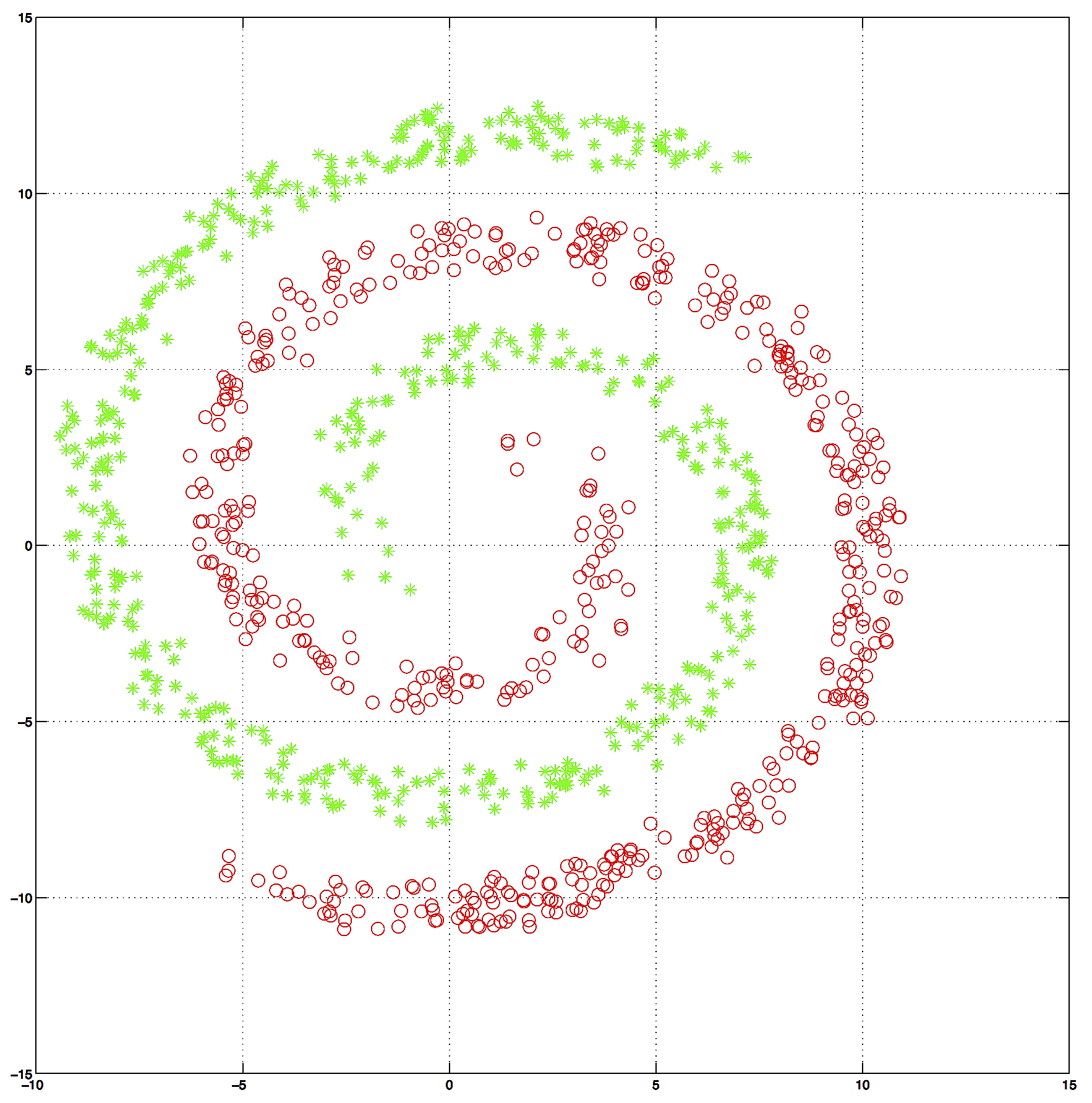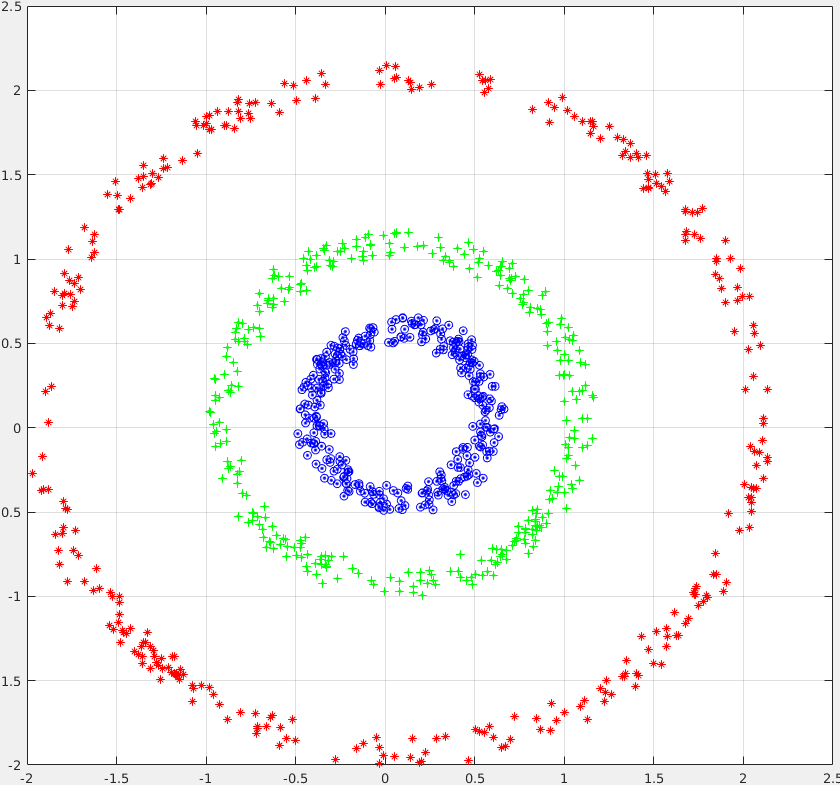CS6220 Unsupervised Data Mining
HW3A Dimensionally Reduction, Supervised Classification
Make sure you check the syllabus for the due date. Please
use the notations adopted in class, even if the problem is stated
in the book using a different notation.
We are not looking for very long answers (if you find yourself
writing more than one or two pages of typed text per problem, you
are probably on the wrong track). Try to be concise; also keep in
mind that good ideas and explanations matter more than exact
details.
Submit all code files Dropbox (create folder HW1 or similar
name). Results can be pdf or txt files, including plots/tabels if
any.
"Paper" exercises: submit using Dropbox as pdf, either typed or
scanned handwritten.
DATATSET : SpamBase: emails (54-feature vectors) classified as spam/nospam
DATATSET : 20 NewsGroups : news articles
DATATSET : MNIST : 28x28 digit B/W images
DATATSET : FASHION : 28x28 B/W images
https://en.wikipedia.org/wiki/MNIST_database
http://yann.lecun.com/exdb/mnist/
https://www.kaggle.com/zalando-research/fashionmnist
PROBLEM 1: Supervised Classification Libraries: Regression, Decision Tree
6 Runs of Supervised Training / Testing : 3 datasets (MNIST, Spambase, 20NG) x 2 Classification Algorithms (L2-reg Logistic Regression, Decision Trees). You can use a library for the classification algorithms, and also can use any library/script to process data in appropriate formats.
You are required to explain/analyze the model trained in terms of features : for each of the 6 runs list the top F=30 features. For the Regression these correspond to the highest-absolute-value F coefficients; for Decision Tree they are the first F splits.
In particular for Decision Tree on 20NG, report performance for two tree sizes ( by depths of the tree, or number of leaves, or number of splits )
PROBLEM 2 : PCA library on MNIST
A) For MNIST dataset, run a PCA-library to get data on D=5 features. Rerun the classification tasks from PB1, compare testing performance with the one from PB1. Then repeat this exercise for D=20
B) Run PCA library on Spambase and repeat one of the classification algorithms. What is the smallest D (number of PCA dimensions) you need to get a comparable test result?
PROBLEM 3 : Implement PCA on MNIST
Repeat PB2 exercises on MNIST (D=5 and D=20) with your own PCA implementation. You can use any built-in library/package/API for : matrix storage/multiplication, covariance computation, eigenvalue or SVD decomposition, etc. Matlab is probably the easiest language for implementing PCA due to its excellent linear algebra support.
PROBLEM 4 : PCA for cluster visualization
A) Run KMeans on MNIST data (or a sample of it)
B) Run PCA on same data
C) Plot data in 3D with PCA representation with t=3 top eigen values; use shapes to to indicate truth digit label (circle, triangle, "+", stars, etc) and colors to indicate cluster ID (red blue green etc).
D) Select other 3 at random eigen values from top 20; redo the plot several times.
PROBLEM 5 : Implement Kernel PCA for linear regression
Dataset: 1000 2-dim datapoints TwoSpirals
Dataset: 1000 2-dim datapoints ThreeCircles
A) First, train a Linear Regression (library) and confirm that it doesnt work , i.e. it has a high classification error or high Root Mean Squared Error.
B) Run KernelPCA with Gaussian Kernel to obtain a representation of T features. For reference these steps we demoed in class (Matlab):
%get pairwise squared euclidian distance
X2 = dot(X,X,2);
DIST_euclid = bsxfun(@plus, X2, X2') - 2 * X * X';
% get a kernel matrix NxN
sigma = 3;
K = exp(-DIST_euclid/sigma);
%normalize the Kernel to correspond to zero-mean
U = ones(N)/ N ;
Kn = K - U*K -K*U + U*K*U ;
% obtain kernel eignevalues, vectors; then sort them with largest eig first
[V,D] = eig(Kn,'vector') ;
[D,sorteig] = sort(D,'descend') ;
V = V(:, sorteig);
% get the projection matrix
XG = Kn*V;
%get first 3 dimensions
X3G = XG(:,1:3);
%get first 20 dimensions
X20G = XG(:,1:20);
%get first 100 dimensions
X100G = XG(:,1:100);
C) Retrain Linear regression on the transformed D-dim data. How large D needs to be to get good performance?


PROBLEM 6 - OPTIONAL (no credit) : Implement Kernel PCA on MNIST
A) First, add Gaussian noise to MNIST images.
B) Then rerun PCA on noisy images (D=5 and D=20) and inspect visually the images obtained by PCA representation
C) Run Kernel-PCA with the RBF Kernel (D=5 and D=20) on noisy images and observe better images visually.

